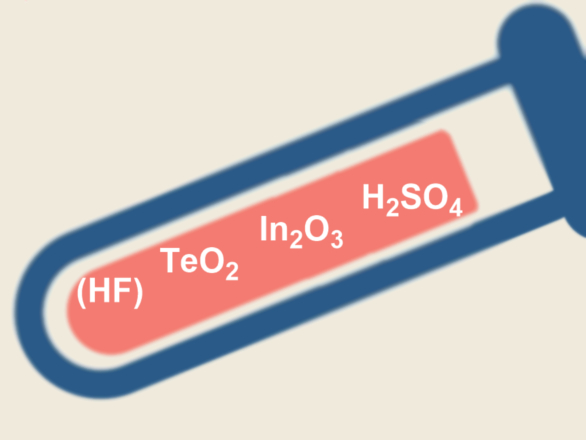Nonlinear optical (NLO) materials can, for example, double the frequency of light passing through them. This effect, also called second harmonic generation (SHG), can only occur in compounds with a non-centrosymmetric crystal structure. However, centrosymmetric structures are much more common than non-centrosymmetric ones in inorganic crystals.
Fang Kong, State Key Laboratory of Structural Chemistry, Chinese Academy of Sciences, Fuzhou, and colleagues have searched for new non-centrosymmetric structures in inorganic chemistry. The team synthesized two previously unknown indium sulfate tellurites: In2(SO4)(TeO3)(OH)2(H2O), which is centrosymmetric, and In3(SO4)(TeO3)2F3(H2O), which is non-centrosymmetric. The compounds were prepared via hydrothermal reactions of In2O3, TeO2, H2SO4, and HF (the latter only for the fluoride).
The team characterized the compounds using powder X-ray diffraction (PXRD) and infrared (IR) and UV–Vis–NIR spectroscopy, among other methods. They found that the fluoride-free compound has a 2D layered structure. In3(SO4)(TeO3)2F3(H2O) consists of indium tellurite layers which are bridged by sulfate tetrahedra to form a 3D network. It acts as an NLO but has a low frequency-doubling efficiency.
- Two Indium Sulfate Tellurites: Centrosymmetric In2(SO4)(TeO3)(OH)2(H2O) and Non-centrosymmetric In3(SO4)(TeO3)2F3(H2O),
Ya-Ping Gong, Yun-Xiang Ma, Shao-Ming Ying, Jiang-Gao Mao, Fang Kong,
Inorg. Chem. 2019.
https://doi.org/10.1021/acs.inorgchem.9b01730




